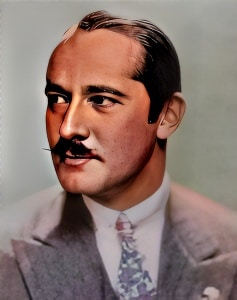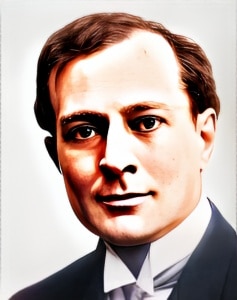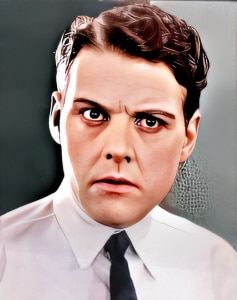 Norman Kerry was an American actor who left a significant mark on the early days of Hollywood and silent cinema.
Norman Kerry was an American actor who left a significant mark on the early days of Hollywood and silent cinema.
Born on June 16, 1894, in Rochester, New York, as Arnold Kaiser, he adopted the stage name Norman Kerry when he embarked on his acting career.
Kerry’s journey into the world of entertainment began in the early 1910s when he started performing in stage productions. His striking looks and charisma quickly caught the attention of casting directors in Hollywood, and he made his screen debut in 1916 in the film “The Little Yank.”
However, it wasn’t until he signed with Universal Pictures in 1918 that he began to establish himself as a leading man. Under the guidance of director Rex Ingram, Norman Kerry started to shine as a versatile actor with a strong on-screen presence.
One of the most notable aspects of Kerry’s career was his ability to portray a wide range of characters, from romantic heroes to complex and often villainous figures. This versatility made him a sought-after leading man during the silent film era, and he successfully transitioned into sound films in the 1920s.
Kerry is perhaps best remembered for his role in the 1925 silent film “The Phantom of the Opera,” where he played the dashing Raoul, the Viscount de Chagny. The film, directed by Rupert Julian and starring Lon Chaney as the titular Phantom, is a classic of the horror genre. Kerry’s performance added depth and charm to the film, as he portrayed the character in love with the opera singer Christine Daaé, played by Mary Philbin.
Norman Kerry’s contribution to the success of “The Phantom of the Opera” was a testament to his ability to play romantic leads and complex characters. His on-screen chemistry with Mary Philbin, along with the atmospheric sets and Lon Chaney’s iconic Phantom makeup, helped make the film a lasting classic.
As the transition to sound films began in the late 1920s, Kerry faced the challenges of adapting to a new era in the film industry. He continued to act in sound films, but the change in the medium led to a shift in the types of roles available to him.
While Norman Kerry’s career gradually declined in the early sound era, he continued to work in films through the 1930s and into the 1940s. His later roles were often in supporting or character parts, a common trajectory for many actors from the silent film era.
Kerry’s contributions to cinema extended beyond his work on screen. He was an advocate for actors’ rights and served as the president of the Screen Actors Guild from 1933 to 1935. His involvement in labor unions and his dedication to the welfare of fellow actors reflected his commitment to the film industry.
Norman Kerry’s career in film spanned several decades, and he left a significant mark on the early days of Hollywood. His work during the silent film era and his ability to take on a wide range of roles contributed to his status as a respected and versatile actor.
While his career may have waned with the advent of sound films, his legacy endures in the form of the classic films in which he appeared. Norman Kerry’s ability to capture the hearts of audiences in romantic roles and to portray complex characters, along with his contributions to the welfare of fellow actors, makes him an important figure in the history of American cinema.
Loading live eBay listings...




